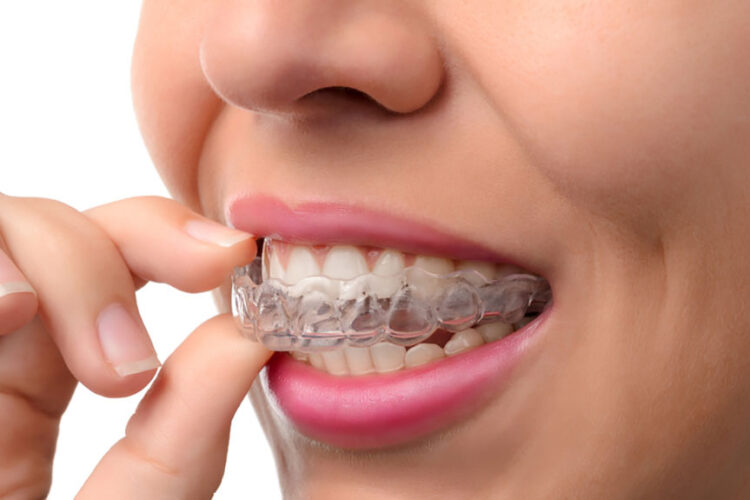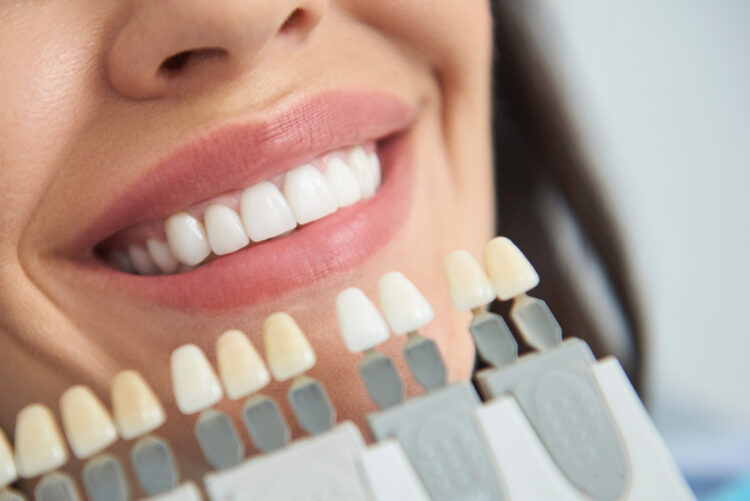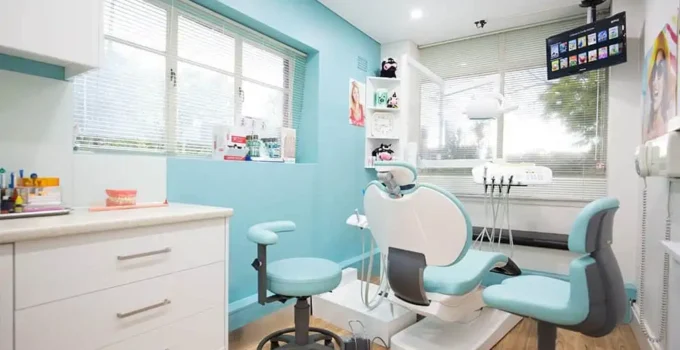Dentistry moves with the times and in this digital world we live in, state-of-the-art dental clinics are designed to offer a wide range of oral healthcare treatments, which we outline in this article.
Page Contents
Cosmetic dentistry
Cosmetic treatments are indeed many, including the following;
Invisalign

Source: absolutedental.com
This is a revolutionary type of clear plastic aligner that gradually straightens the teeth and what’s more, it can be removed when eating. When wearing the device, it is not evident, as the work is done at the rear rather than the front; the dentist might have to change the aligner after a month or two when specific teeth require more pressure to be more aligned for a nicer smile.
Wire braces
The use of steel wire braces is on the decline, largely thanks to Invisalign, which is virtually invisible and those who are self-conscious or publicly speak would prefer the clear plastic aligner. There are cases where the dentist would recommend wire braces when more force is required. It can take up to 2 years to fully straighten the teeth, with regular adjustments.
Porcelain veneers
The super thin pieces of porcelain are attached to the front of the teeth and a skilled cosmetic dentist can work wonders with veneers. This treatment is recommended for discoloured teeth, chipped or cracked teeth, gaps and slightly crooked teeth.
Professional teeth whitening

Source: interdent.com
The cosmetic dentist creates a special tray that exposes the teeth and protects the gums, then a special bleaching gel is applied and laser light causes a reaction, which lightens the shade; you can go up to 8 shades whiter with a single treatment. The best way forward is to contact your local Chatswood dentist and book an introductory appointment for teeth whitening; the specialist would show you shade cards and together, you can decide what shade is best for you. You might think it’s a good idea to go as white as you can, yet this doesn’t always look natural; your dentist will advise you accordingly.
Dental implants
The permanent solution for missing teeth, implants involve the insertion of a titanium pin into the jawbone, which takes a few weeks to bond and once it does, the prosthetic tooth can be fitted. Anything from a single tooth to full sets of upper and lower teeth can be fixed with dental implants. ‘All on 4’ is a very popular treatment for elderly people who would rather not wear dentures; the entire upper set of teeth is help in place by 4 carefully placed posts, the same for the lower set and once fitted, you can treat them as you would natural teeth by brushing and flossing on a daily basis. If looked after, dental implants can last a lifetime and most dentists would guarantee 5-10 years. In the event a person’s jawbone is too thin to accommodate the posts, a bone graft can be carried out, or the prosthetic teeth can be anchored to a wire frame on the gumline.
Dental bridges
A dental bridge spans a single or multiple teeth and is anchored by shaping the teeth either side to a peg, to which the bridge device is attached to. A cantilever bridge only requires one anchor point, although this is not always feasible. The dentist would explain the options and would advise accordingly. Prior to the arrival of dental implants, the bridge was the go-to treatment for a missing tooth and if care is taken, can last up to 20 years. Porcelain is the preferred material, although there are special resins that can be used.
Porcelain crowns

Source: blackwelldentist.com
Used with teeth that are not root damaged; the tooth is shaped down to a peg, then a porcelain prosthetic tooth is fitted with super adhesive. If you have tooth decay, for example, a crown might be the best treatment; if the root is damaged, it might not be possible and a dental implant would be recommended.
Composite fillings
Sugar causes tooth decay as you probably know and if you should notice a tiny pinhole in one of your molars, this is the time to make an appointment with your local dentist in Chatsworth, who can drill out the damaged material, clean the area and apply a composite filling that perfectly matches your tooth colour.
Root canal treatment
This is a treatment that can often save a tooth, which might be infected in the root and rather than extraction, the root canal is thoroughly cleaned and a special material fills the canal, keeping the roots healthy and stable. Extracting the inner pulp is a complex process and when done correctly, will resolve the issue and the tooth is not compromised.
Regular dental check-ups
Don’t be one of those people who only see their dentist when they have toothache – be proactive and have a 6-monthly check-up, which would reveal any minor problems and allow for prompt treatment. If you can’t remember the last time you were in a dental clinic, Google will whisk you to a local dental clinic and you can book a check-up via the website.
The importance of best oral practices

Source: jnj.com
If you are proactive regarding oral health, you can reduce the risk of dental issues;
- Brush and floss daily
- Use antiseptic mouthwash
- Avoid drinking black coffee and red wine
- Adopt a sugar-free diet
It is also important to enjoy a balanced diet with fresh fruit and vegetables and pay attention when brushing; use a small dental mirror to check for cavities (in between check-ups) and be careful when bearing down on a bite.
Some people carry a small bottle of mouthwash and use it after every snack or drink, which helps to prevent cavities. Have you got a toothbrush set at work? If not, now is the time to order a travel oral care set, which comes in a stylish bag.
If we take care of our oral health, we will have strong and healthy teeth and gums.




